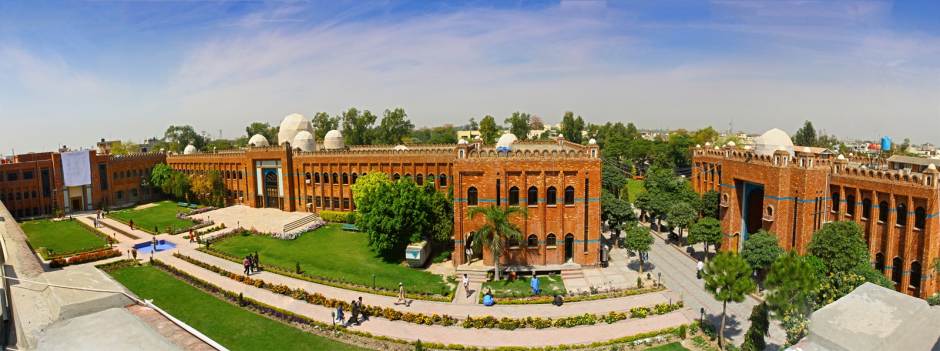So it finally happened; Google did set its foot in Pakistan. Well, it kind of did. Why kind of? I’ll explain that in a while.
The news of Google coming to Pakistan was met with positive response from all around the technological sphere in Pakistan. Even those with no experience in website or apps development were also excited by the fact that Pakistan was being recognized as a potential market by Google. Due to longer than necessary YouTube ban and Google not having any actual presence as a business entity in Pakistan, relationship between Google and Pakistani government had its fair share of ups and downs. So many people, including myself, thought this event will be able to bridge the gaps and help solidify the presence of Google in Pakistan.

As it turns out though, although this event was supported by Google, it was not a “Google event” in the official sense. The brains behind this event, Waqas Burney (Manager Web, Google South Asia) and Ahmad Nawaz (Manager Apps, Google South Asia), wanted to do something to encourage publishers in Pakistan and thus used their part-time activities time at Google to arrange this event in Pakistani Universities.
So what if it was not actually an official event, it was still conducted by actual employees who work at Google and know the system very well. No one can doubt its effectiveness in bringing Pakistani publishers up to speed with Google’s platform. It was a good beginning and I hope that Google will look towards its success as a measure of Pakistan’s eagerness to get involved in the online revolution being brought about by Google and its subsidiaries.
A total of nine universities were selected for this event. Luckily FAST Lahore was one of them and I was able to attend and experience the event first hand. In FAST, only students were allowed to enter and strict measures were taken to prohibit entry of any unrelated person. This showed that they were only interested in engaging people who wanted to learn, and not in publicity of any form.
The event comprised of three parts: the first part consisted of introduction and application of Adsense, the second part was focussed with Admob and the last part was a short introduction to applying and working at Google by Cymone Ding (program specialist and university recruiter at Google South Asia). I will go briefly through all the main portions of their presentations to give you a general sense of what those speakers conveyed during their two and a half hour long talk at FAST Lahore.
What is Google Adsense and why I should be using it?
According to a survey conducted by Google before that event, 60 percent of the people who registered were publishers of one type or another. But the surprising part of that survey was that only 20 percent of those publishers knew anything about Google Adsense and how to monetize their site. Waqas Burney, an alumni of GIKI and LUMS, described this as the main inspiration for coming to Pakistan and conducting these sessions.
Most of Waqas’s speech concentrated on benefits of using Adsense to make sure that your hard work in creating original content for your online blog or website does not go unpaid. His key points in favor of Adsense were:
- In the year 2015 alone, Google paid 2 million Adsense users more than $10 billion generated by showing advertisements from more than 1 million advertisers.
- Adsense is supposed to be family safe, so you can place ads on your site without worrying about displaying sexual, violent or controversial content.
- Adsense has seen over 12 years of development and is now much more polished as compared to its competitors.
- In Pakistan alone, some publishers are earning up to $75,000 per month with Adsense. (You can also earn this much by setting up your own blog and publishing content.)
Okay.. Google Adsense is awesome, how do I get it?
Well.. this part is not so simple. Not according to Ahmed Burney at least. He spent a major portion of his presentation to focus on various pitfalls and mistakes that Pakistani publishers do which make them ineligible for entry in the Adsense platform. Some of them include:
- The first one is actually obvious one – plagiarism. Using any intellectual property of anyone else will get you blacklisted on Adsense. According to Burney, you can be blocked and your payment may be stopped by only one legitimate complaint.
- Using inorganic methods to increase traffic or dubious methods to induce ad clicks. Burney acknowledged that some might get away with such methods, but he stressed the point that sooner or later, their system always catches people who do this.
- Using more than necessary ads, or strategically placing ads to hamper user experience.
- He did mention that Urdu pages are still not monetize-able and he couldn’t give any time frame for introducing support for Urdu blogs and websites.
- Lastly, if there is any content on your site or blog which is sexually explicit, incites violence or is offensive to anyone, there is a big chance that you might not be able to enroll in the Adsense program.
If you have gone through the above points and feel that you are not in violation of any one of them, it is time to move on to the next step.
Now you have to look at how many people are actually engaging with your content. Google Adsense favors sites which generate a lot of traffic and thus have a higher chance of people interacting with the ads. A general rule of thumb suggested by Burney is to look at total visits in a month, if it is above 300,000, you should definitely think about using Adsense. But even if you are below that level of monthly page visits, applying for Adsense is not a bad idea.
The actual process of adding Adsense is pretty simple. From a WordPress plugin to complete HTML-based implementation, there are a number of ways in which you can add Adsense to your site.
But I like apps more than websites..
If you are an app developer and want to know how to make money by making cool and useful apps, don’t worry. Google has something in store for you too.
Next in line was Ahmad Nawaz, a NUST alumni working with app monetization in Google South Asia. He was there to talk about Admob – Google’s solution for in app advertisement on Android and iOS devices. Some interesting statistics shared by him were:
- There are now more mobile connections in the world than there are actual people. 7.4 billion mobile connections compared to 7.125 billion people. Crazy, isn’t it?
- Most growth shown is in smartphones – 88 percent.
- There are more than 1.43 billion smartphone users in Asia, more than rest of the world combined.
- There are 10 million mobile app developers globally.
- Apps in play store have exceeded 3 million, with 1 million being added in the last year alone.
- 37 percent apps offer in-app purchases.
- Only 1 percent of the people using apps actually buy apps. This is a surprising statistic and explains the reason behind the popularity of the freemium model.
- 50 percent of all revenue generated by apps and games is from in-app advertisement.
So we have finally established that showing ads is probably the best way to monetize your app. Now what? Now you have to complete almost the same procedure as described above for Adsense. Same as Adsense, you will be given multiple options to make sure that ads look good in your app and do not ruin the user experience.
What if I don’t wanna show ads of rival app? They already have more downloads
This is actually a really wonderful feature of Admob. You can filter ads based on many different categories. For example, if you are developing a religious app, then you can make sure that ads containing drinking and other recreational activities do not show up. You can also filter ads based on individual companies, so you can make sure that your rival does not get unwarranted attention.
In addition to this, Ahmad gave detail about native ads – ads which blend in the user interface to look like a part of your app. These ads have exploded in popularity and most famous apps like Facebook, Twitter and Instagram make use of this model to vastly improve user experience.
Wrapping things up
In the end, Cymone Ding came on the stage and introduced life at Google. She showed videos of 36 women who won a scholarship and visited Google’s Singapore office. All of that was awe inspiring and motivating for any student hoping to get a job at Google one day. She gave information about APAC university tests which are designed by Google to judge potential employees and internees on the basis of their ability to code and solve problems in an efficient and effective way.
Although it can be debated that this was not an official Google event, still it was very informative for anyone looking into app or website monetization. I can only hope that the interest shown by Pakistani students and the warm welcome given to Google employees will mean that such events will keep on happening to educate and train the amazing Pakistani publishers and developers.












